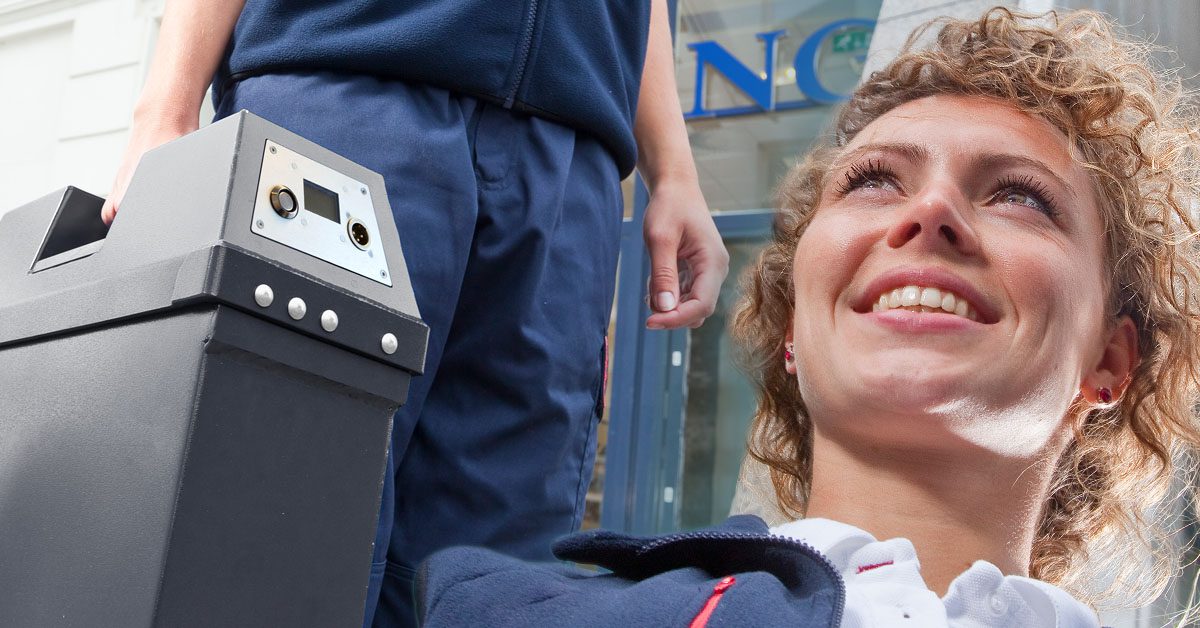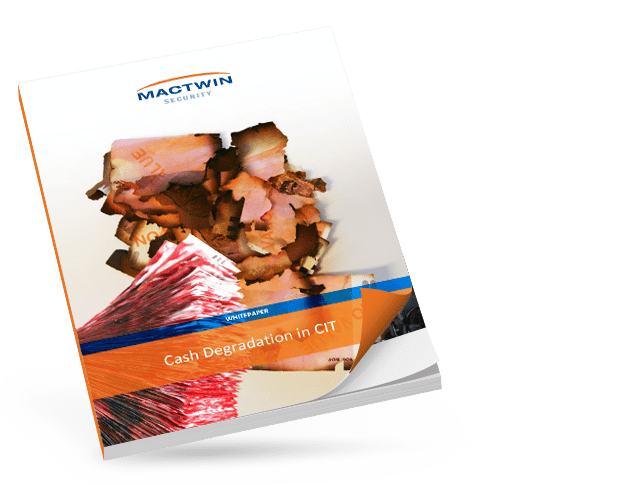Is a CIT Cashbox safe to use?
In the early 1980s, there were many attacks on Cash in Transit (CIT) operations in the Netherlands, often with heavy automatic weapons. Of course, these attacks affected the CIT industry, but they also had a huge social impact. At the request of the Dutch government and the CIT industry, Mactwin invented the first Cashbox at the time. The product has of course evolved over the years, but the basic principle remains the same: irreversible cash degradation. After some time, other manufacturers came onto the market with cashboxes of their own, based on the Mactwin principle (cash degradation), but each with its own specific method. But if the cash is degraded, is it still safe for the CIT custodians? Read more in this article!
Weight and ergonomics
The safety of working with a Cashbox depends on several factors. Firstly, how heavy is a full case? Because although 15 kg may not seem like much when you pick it up, you’ll probably reconsider this notion after a day with 60 locations. In addition to weight, the ergonomics of the design are also a factor. If a suitcase is too high, lifting by smaller employees may become problematic as they have to walk with hunched shoulders. There are trolley cases with wheels that reduce the need for lifting and there are even trolley systems that can be dragged up stairs with some ease. A point of attention here is that wheels can quickly become subject to wear, especially with intensive use such as in Cash in Transit.
Risks of cash degradation for CIT custodians
In addition to the weight and size of the suitcase, the consequences of an activation for the CIT custodian must be taken into account. Is ink injected into the case with high pressure? Does the Cashbox have a smoke cartridge (crime scene marker) on board? What are the hazardous substances of those liquids or smoke? Can the employee (if acting incorrectly) be exposed to these substances? And if so, what are the health risks?
In this regard, it is important to ask the following questions:
- Which substances or vapors are released upon activation and during salvage?
- With ink: how is the degradation agent distributed in the Cashbox? It is known that many solutions spread the ink over the banknotes under high pressure. Only a few solutions do this under low pressure. It goes without saying that the health & safety risk of low-pressure systems is smaller than that of high-pressure systems.
- In the case of High Energy systems: doesn’t the Cashbox become dangerously hot on the outside after activation?
- Which safety provisions does the product have to prevent misuse – and thus the undesired release of the degradation agent?
Assess the Safety Sheet (MSDS)
Furthermore, it is important to critically assess the MSDS (Material Safety Data Sheet). This should be available with every solution and provides information about the (hazardous) substances present in the degradation module. It should also contain protocols on how to act an activation.
Safety by Design
The most important thing during Cash in Transit is that the custodians/employees are safe. They must never fall prey to the violence of a criminal. To ensure this, we need to remove the employee from the sphere of influence. Once en route, the employee must not have the opportunity to open the suitcase or prevent activation. Not because he cannot be trusted, but so that this cannot be used against him and he does not become a target for the criminal. After all, he has no opportunity to help the criminal get the money. The only thing he can do and has to do in the event of a robbery is immediately hand over the suitcase. He does not have to protect the suitcase with danger to life and limb. After all, that would only lead to an escalation of violence.
Choosing a safe Cashbox for your CIT operation
There are many differences between the available CIT Cashboxes. When selecting a safe and secure CIT Cashbox, explore the options offered by the various manufacturers in this area and make the best choice. In any case, when choosing your perfect solution, keep these 5 critical success factors (in no particular order) in mind.
- Banknote degradation: distinctive and irreversible
- Flexibility in operation
- Health & Safety
- Certification and local legislation
- Price & TCO


